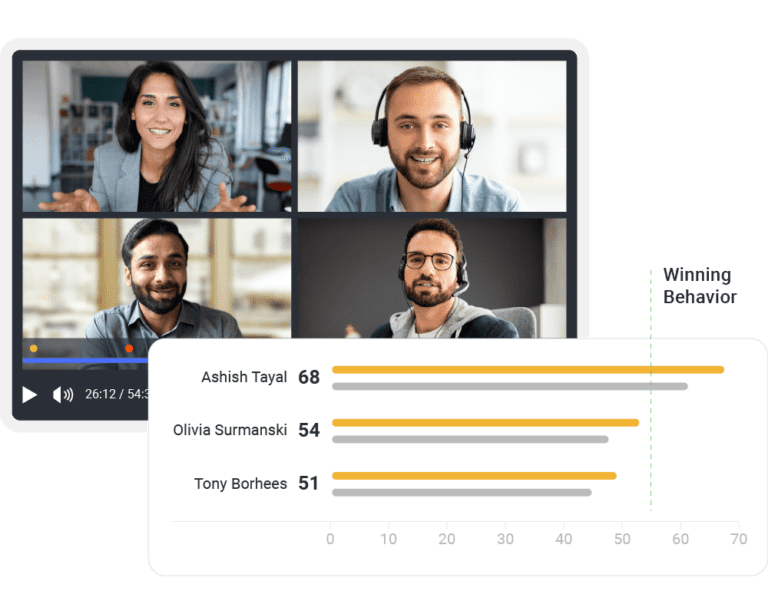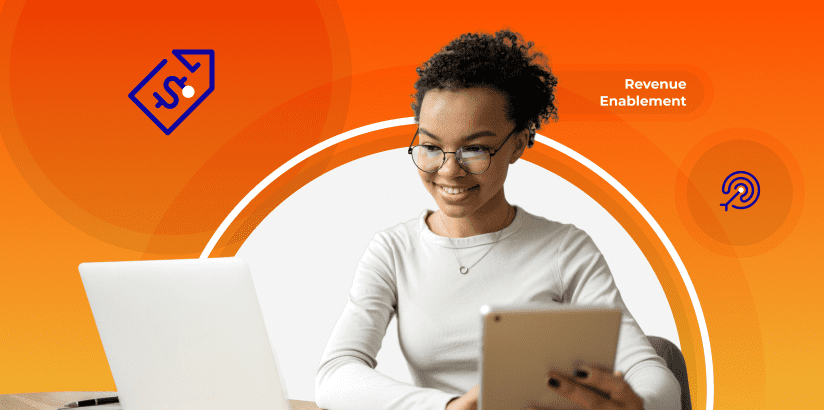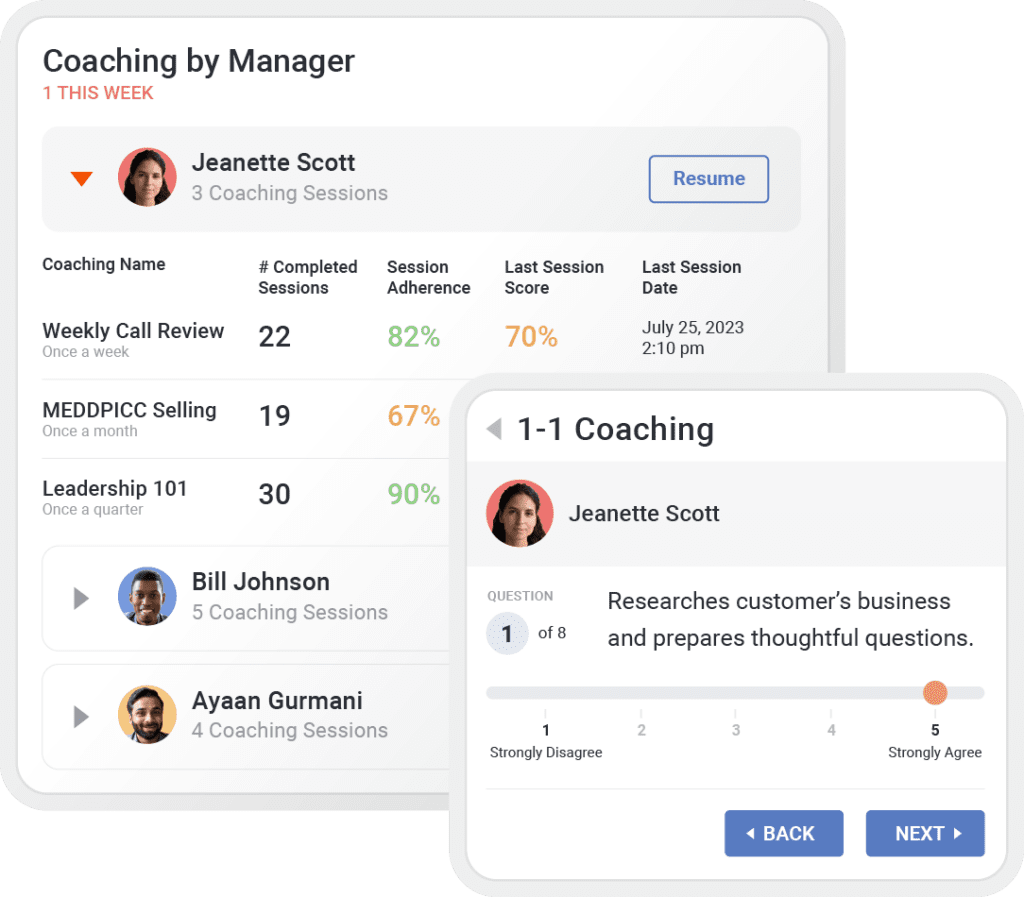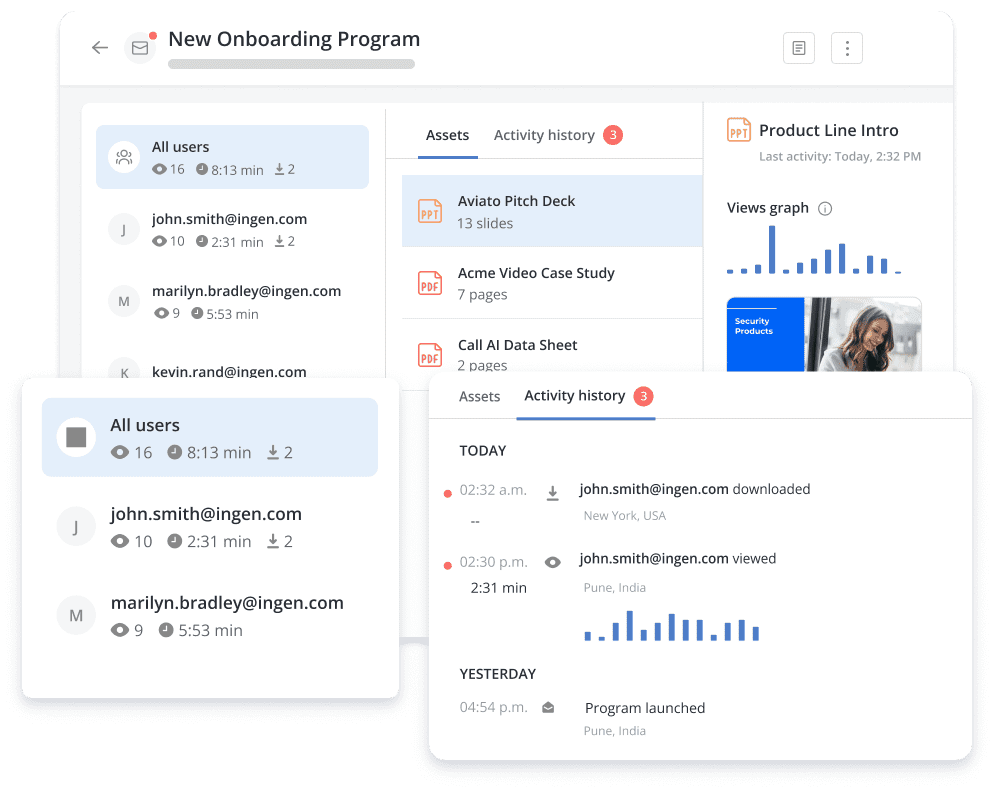How to Leverage AI Sales Coaching and Training to Supercharge Team Performance and Revenue Growth
![]() Helen Waite
on
August 16, 2024
Helen Waite
on
August 16, 2024
Every sales leader knows training and coaching are keys to sales success. With the right training and coaching, sellers can hone their sales skills to engage buyers and close deals.
But sales training and coaching must be relevant to be effective. In other words, sales training and coaching must be personalized to the needs of each seller.
Delivering personalized training and coaching can seem impossible, especially as your team grows. That’s where AI sales coaching and training come in.
If you’re not sure what AI sales coaching and training is, you’ve come to the right place. In this guide, we’ll explore everything you need to know about AI sales coaching and training, including:
- What AI sales coaching and training is
- How it works
- Why it’s beneficial to sales reps
- Why a growing number of revenue organizations are embracing AI sales coaching and training to boost sales performance
- The importance of choosing the right AI sales coaching tool
What is AI sales coaching and training?
AI isn’t exactly a new concept. But in the past few years, we’ve seen rapid adoption of AI in both the personal and professional realm. The world of sales is no exception. A recent survey found that only 24% of revenue organizations aren’t using AI sales tools.
A recent survey found that only
So, what is AI sales coaching and training?
AI sales coaching and training involves leveraging artificial intelligence (AI) to create and deliver personalized coaching and training at scale. When revenue organizations strategically use AI in their sales coaching and training, sellers can master the skills they need to succeed. That means they’ll close more deals, and revenue will grow.
How does AI coaching and training work?
We’ve defined what AI coaching and training is. But how exactly does AI coaching and training work?
Innovative revenue organizations leverage AI in several ways to deliver effective sales coaching and training at scale. Let’s take a closer look.
Data analysis
Data is foundational for artificial intelligence. Fortunately, most organizations have access to plenty of data. But compiling and making sense of that data is another story.
AI compiles data from various sources, including call recordings, reports, and customer interactions – among others. Then, it analyzes the data to provide insights to inform coaching and training.
For example, AI sales training software can help sales leaders pinpoint the strengths and weaknesses of each of their sellers. AI can also provide recommended steps for closing skill gaps.
Sales managers can also use a tool like Mindtickle Copilot to find answers to questions like “Which region is struggling with objection handling?” or “Which managers are coaching their reps the most?”
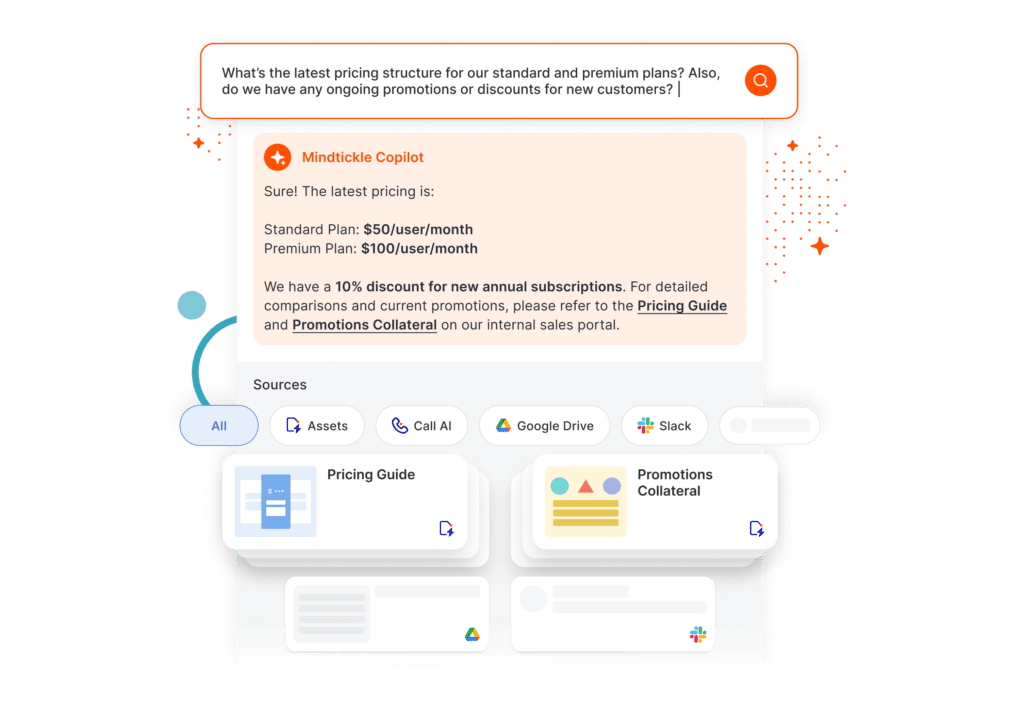
Personalized training and enablement
No two sales reps are the same, yet organizations often provide all sellers with the same training and enablement.
With AI sales training software, organizations can deliver tailored training and learning paths based on each rep’s strengths and weaknesses. That way, each rep can access relevant resources to build lagging skills.
In addition, sales reps can ask questions without having to wait for a response from a subject matter expert. AI analyzes existing content to provide an answer and can share additional resources for the sales rep to learn more.
Speedy learning content creation
Any sales enablement professional knows that launching an impactful program can take time. But with AI sales training, you don’t need to start from scratch.
An AI sales enablement tool like Mindtickle Copilot enables teams to quickly and easily create practice and reinforcement modules that help sellers retain and apply knowledge in the field.
Real-time sales coaching
When done well, sales coaching can greatly impact sales productivity and performance. However, traditional sales coaching techniques are labor intensive, and sales reps must wait for their manager.
Interactive, engaging practice opportunities
Some sales coaching tools like Mindtickle also feature interactive, AI-powered role-plays. Sales reps can practice their pitch on a realistic AI bot. The rep gets feedback throughout the experience, which they can use to hone their skills before money is on the line.
Data-driven content recommendations
Most sales reps have ample content available. However, they often spend too much time searching for the right content for the right scenario and base their decisions on hunches or gut feelings.
AI can recommend the most relevant and impactful content based on data, including past performance and customer activity. A sales training tool like Mindtickle Copilot can also draft contextual emails that sales reps can send about the content.
Ongoing measurement
Ongoing measurement is key to understanding the impact of sales training and coaching – and identifying areas for improvement. AI sales training software enables organizations to track and analyze the right metrics. This helps organizations understand the impact of their sales coaching and training and make data-based optimizations.

How does AI sales coaching and training benefit sales reps?
Today, many revenue organizations are starting to embrace AI sales coaching and training. According to a recent survey, some of the top use cases include:
- Analyzing call recordings
- Empowering sales reps to get answers to customer questions in the flow of work
- Serving up recommendations for training
- Suggesting content for sales reps to use
- Gaining insight on seller performance
It’s easy to understand why organizations adopt AI sales coaching and training, as it delivers many powerful benefits for sales reps.
Sales reps only have so many hours in the day. With AI sales coaching and training, they no longer have to waste their time on generic training and coaching. Instead, sellers can easily access tailored training and coaching opportunities.
With AI, organizations can better understand the skills and behaviors key to success in each role. Then, AI can deliver personalized training and coaching that helps each sales rep build the right skills.
Sales reps need opportunities to practice the skills they’ve learned. With AI, sales reps can engage in interactive role-plays and get instant feedback. That way, they can hone their pitch before money is on the line.
Sales reps want feedback, but often, their managers are too busy to provide it. With AI sales coaching, sales reps get real-time feedback. AI can analyze sales calls to identify opportunities for improvement. Sellers can then incorporate this feedback to improve the outcome of a deal.
Questions can arise at any time of day. With AI, sales reps can get the answers they need when needed. There’s no need to wait around for a subject matter expert.
Sales reps spend far too much time searching for the right content for the scenario. With AI, sales reps can get content recommendations that are proven to be effective in similar scenarios.
Salesforce research found that sales reps spend less than 30% of their time actually selling. AI automates and streamlines many time-consuming tasks, leaving sales reps with more time to engage with buyers and guide them to the finish line.
How can Mindtickle Copilot improve your sales training and coaching programs?
Ongoing sales training and coaching are key to ensuring your reps are always ready to conquer any deal. With AI sales coaching software, you can deliver effective training and coaching programs tailored to each seller’s unique needs.
Getting started with AI sales coaching and training can feel overwhelming. But with Mindtickle Copilot, it doesn’t have to be.
Mindtickle enables sales leaders to quickly make sense of data and gain insights to make better decisions. For example, sales managers can quickly understand the strengths and weaknesses of each of their sales reps. Then, AI can create personalized learning paths to empower each sales rep to strengthen their weaker skills.
With Mindtickle Copilot, enablement teams can quickly and easily create enablement experiences that help sellers retain knowledge and build skills. For example, you can ask Mindtickle Copilot to create an assessment that tests whether or not sellers have retained what they’ve learned in a training module.
Mindtickle’s platform also empowers sales reps to access on-demand coaching. AI provides a score for each recorded role-play or sales call and tailored feedback for improvement. There’s no need to wait around for manager feedback.
Mindtickle also allows sales reps to engage in interactive role-plays with an AI bot, where AI delivers feedback throughout the role-play experience. These realistic scenarios prepare sales reps for real-life experiences.
Mindtickle Copilot also makes it easy for sellers to prepare for any prospect interaction. For example, a sales rep can use Mindtickle Copilot to ask what objections a prospect brought up in their last call. Then, AI can surface the right content to address those objections. Mindtickle Copilot can even draft a contextual email for a seller to send to the prospect when sharing the content, which saves time.
Finally, Mindtickle Copilot can help you track and analyze the right data to understand how your AI sales coaching and training is impacting outcomes – and where there are opportunities for optimization.
AI Sales Coaching in Mindtickle
Ready to see firsthand how Mindtickle can empower your business to deliver sales training and coaching that supercharges sales performance?
Get Your Demo













